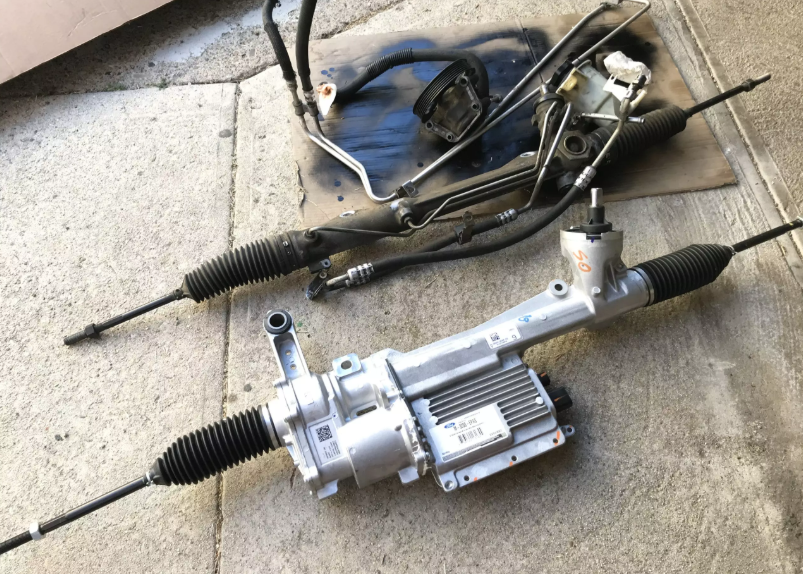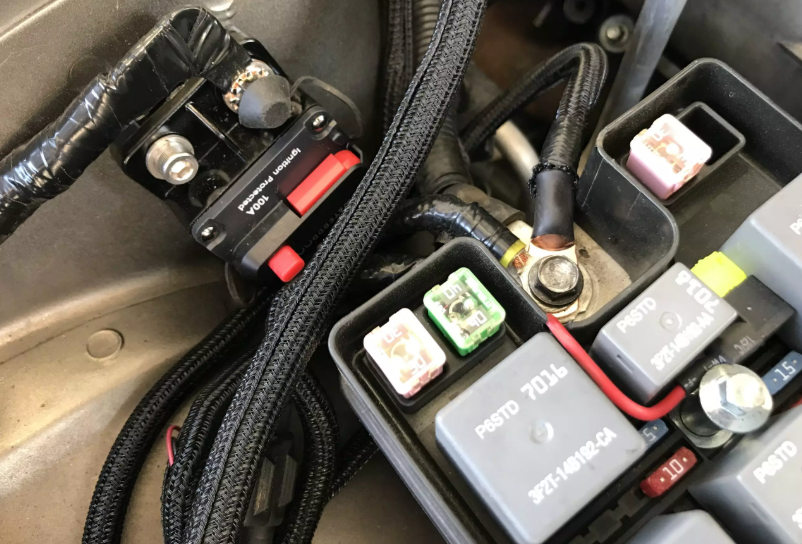2011 Ford Mustang EPAS voltage check involves using a multimeter to measure the voltage at the EPAS connector. The voltage should be between 13.5V and 14.5V for proper steering function.
The 2011 Ford Mustang marks the introduction of the sixth generation of this iconic muscle car, and one of the most significant upgrades was the transition to Electric Power Assisted Steering (EPAS). This system replaced the traditional hydraulic steering, providing greater fuel efficiency, reduced weight, and the promise of smoother, more responsive steering. However, like any electronic system, the EPAS is vulnerable to issues, particularly with its voltage supply.
In this article, we will discuss the importance of the EPAS system, how to check the voltage for optimal performance, common problems related to voltage irregularities, and steps to troubleshoot or repair issues related to EPAS voltage.

Contents
What is the EPAS System?
The Electric Power Assisted Steering (EPAS) system in the 2011 Mustang replaces the old hydraulic steering system with an electric motor that assists in steering. The system uses a torque sensor to detect the driver’s steering input, while a power steering control module (PSCM) processes this data and commands an electric motor to assist with steering. This system provides several benefits, such as:
- Improved fuel efficiency: EPAS consumes less power than traditional hydraulic systems, which helps save fuel.
- Reduced weight: The EPAS system is lighter than hydraulic systems, contributing to better overall vehicle performance.
- Better steering feel: The electric motor adjusts the steering assist based on speed, providing a smoother and more comfortable driving experience.
While the EPAS system is generally reliable, it requires proper voltage to function optimally. Low or fluctuating voltage can lead to several issues, which we’ll cover in the troubleshooting section.
How the EPAS System Relies on Voltage
Voltage is a critical element in the operation of the EPAS system. The electric motor and the control module that assist the steering require a stable power supply to work properly. When there’s a voltage drop, the system may not provide adequate steering assistance, leading to a heavier steering feel or even complete failure.
Key Components Involved in Voltage Regulation
To understand how voltage affects the EPAS system in the 2011 Mustang, it’s essential to familiarize yourself with the key components that regulate and manage the electrical supply. These components work together to ensure that the steering system operates smoothly and efficiently, providing the driver with a responsive and safe driving experience.
- Power Steering Control Module (PSCM): This module regulates the power sent to the electric motor. It needs a consistent voltage to operate correctly.
- Torque Sensor: The torque sensor detects the driver’s steering input, sending signals to the PSCM. A voltage drop here can result in erratic steering behavior.
- Electric Motor: This motor provides the actual steering assistance, and its performance is directly linked to the voltage provided by the PSCM.
The EPAS voltage must be within the recommended range for the system to function correctly. A faulty alternator, weak battery, or wiring issues can all lead to incorrect voltage, which might result in steering issues.
How to Check EPAS Voltage in the 2011 Ford Mustang
A voltage check is an essential part of routine maintenance and troubleshooting.
Tools You Will Need:
- Digital Multimeter: A multimeter is essential for measuring the voltage output in the EPAS system.
- Socket Set: You may need a socket set to remove any panels or components that may block access to the EPAS connectors.
- Service Manual: It’s always a good idea to have your vehicle’s service manual for reference, particularly for locating connectors and identifying specific pins for testing.
Step-by-Step Process for Checking EPAS Voltage
Checking the EPAS voltage in your 2011 Ford Mustang is important for ensuring that the steering system is functioning properly. In this section, we will guide you through the necessary steps to perform an accurate voltage check and troubleshoot any potential issues.
Step 1: Preparation
- Ensure the vehicle is parked on a level surface and that the ignition is off.
- Gather your tools: multimeter, socket set, and service manual.
- Locate the EPAS connectors (usually near the steering rack), which the multimeter will connect to in order to test the voltage.
Step 2: Set Up the Multimeter
- Set your multimeter to measure DC voltage.
- Connect the positive (red) lead of the multimeter to the voltage test pin in the EPAS connector. Connect the negative (black) lead to a ground point on the vehicle, such as the chassis or negative terminal of the battery.
Step 3: Turn on the Ignition
- With the multimeter connected, turn the ignition to the “ON” position (without starting the engine).
- You should observe a voltage reading between 12V and 14V with the engine off, which is typical for a car’s electrical system.
Step 4: Measure the Voltage During Engine Operation
- Start the engine and let it idle.
- Check the voltage again. With the engine running, the voltage should remain steady within the range of 13.5V to 14.5V.
- If the voltage fluctuates or drops below 12V, this may indicate a problem with the alternator, battery, or EPAS system.
Step 5: Interpret Results
- If the voltage is consistent and falls within the recommended range, the EPAS system should be functioning properly.
- If the voltage is outside of this range, it may indicate issues with the power supply, which could affect steering assist.

Common Issues Related to EPAS Voltage
If you notice any of the following symptoms, it may indicate a voltage issue affecting the EPAS system:
1. Heavy Steering
If the steering feels unusually heavy or stiff, it could be due to insufficient voltage supply to the electric motor. This could be caused by a failing alternator or battery.
2. Erratic Steering Behavior
Erratic steering, such as sudden fluctuations in steering effort, could be a sign of voltage fluctuations in the EPAS system. This is often due to a wiring issue or a malfunctioning control module.
3. Loss of Steering Assist
If the EPAS system stops providing any assist, making the steering very difficult, this could be due to a complete failure of the voltage supply to the system.
4. Warning Light on the Dashboard
The “Power Steering” warning light or “Check Power Steering” light may illuminate on the dashboard if there is a voltage problem with the EPAS system.
Troubleshooting EPAS Voltage Issues
If you encounter issues related to EPAS voltage, follow these troubleshooting steps:
Step 1: Check the Battery and Alternator
- Use your multimeter to check the battery voltage. If the voltage is low, charge or replace the battery.
- Test the alternator output by measuring the voltage at the battery terminals with the engine running. A healthy alternator should produce between 13.8V and 14.4V.
Step 2: Inspect the Wiring
Look for any damaged or corroded wiring that could be causing voltage drops. Pay special attention to the wiring around the EPAS connector and control module.
Step 3: Test the PSCM
If the voltage readings are still irregular, the Power Steering Control Module (PSCM) might be faulty. Consider having it diagnosed by a professional mechanic or technician.
Preventive Maintenance for EPAS System
Maintaining the EPAS system is crucial for ensuring its longevity and performance. Here are some preventive tips:
- Regular Battery Maintenance: Keep the battery in good condition, as it supplies the necessary voltage to the EPAS system.
- Monitor Alternator Output: Regularly check the alternator to ensure it is providing stable voltage output.
- Inspect Wiring and Connections: Perform periodic checks for corrosion or loose connections, especially in the EPAS-related components.
Frequently Asked Questions
Here are some FAQs about checking 2011 Ford Mustang EPAS voltage –
1. How do I check the EPAS voltage in my 2011 Mustang?
To check the EPAS voltage, use a multimeter to measure the voltage at the EPAS connector while the engine is running. The voltage should be between 13.5V and 14.5V.
2. What causes voltage issues in the EPAS system?
Voltage issues can be caused by a failing alternator, a weak battery, damaged wiring, or a malfunctioning Power Steering Control Module (PSCM).
3. What are the symptoms of EPAS voltage problems?
Symptoms of EPAS voltage issues include heavy steering, erratic steering behavior, loss of steering assist, or warning lights on the dashboard.
4. How can I fix a low voltage issue in the EPAS system?
Check the battery and alternator to ensure they’re functioning properly. Inspect the wiring for any damage or corrosion, and replace the PSCM if necessary.
5. How often should I check the EPAS voltage?
It’s recommended to check the EPAS voltage during routine vehicle maintenance or if you experience any steering issues.
Conclusion
The 2011 Ford Mustang’s EPAS system offers a modern solution for steering assist, contributing to a more efficient and enjoyable driving experience. However, like any electronic system, it requires consistent and stable voltage to perform optimally.
If you know the importance of EPAS voltage and how to check it, you can ensure that your Mustang continues to provide smooth, responsive steering for years to come. Regular maintenance and early detection of voltage-related issues can save you time, money, and headaches.




